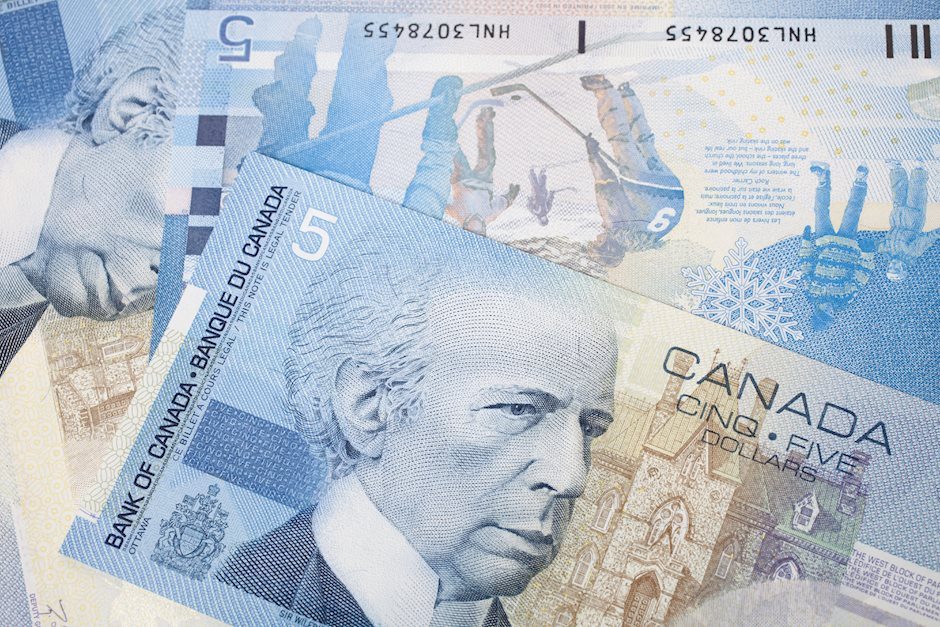USD/CAD extends upside above 1.3750, with all eyes on BoC rate decision
- USD/CAD trades in positive territory for the sixth consecutive day near 1.3785 in Wednesday’s early Asian session.
- BoC is widely anticipated to cut its benchmark interest rate by 25 bps to 4.50% at its July meeting on Wednesday.
- Economists expect the Fed will cut interest rates twice this year amid the cooler inflation over the past few months.

The USD/CAD pair extends a rally around 1.3785 during the early Asian session on Wednesday. The pair edges higher amid the risk-off mood, which boosts the Greenback broadly. Investors will closely monitor the Bank of Canada (BoC) interest rate decision later in the day, which is expected to cut rates again by 25 basis points (bps) to 4.5%.
After the signs of easing price pressures in June, the financial markets have almost fully priced in a 25 bps rate cut by the BoC that would bring the benchmark rate down to 4.5%. Taylor Schleich, rates strategist at the National Bank of Canada, said, “A rate cut is likely to be delivered,” and the Canadian central bank might reiterate its message that future cuts will be based on incoming data.
Meanwhile, demand concerns from China and easing geopolitical tensions drag crude oil prices lower to six-week lows. This, in turn, undermines the Canadian Dollar (CAD) as Canada is the major crude oil exporter to the United States. The combination of BoC rate cut expectation and lower crude oil prices might lift the USD/CAD pair in the near term.
On the US front, traders see the first rate cut by the US Federal Reserve (Fed) in September, with the possibility of nearly a 96%. A majority of economists in a Reuters poll anticipate the Fed will cut interest rates twice this year amid cooler inflation over the past few months and recent signs of labor market weakness.
Data released on Tuesday showed that US Existing Home Sales dropped by 5.4% MoM in June from 4.11M to 3.89M, worse than expected. Meanwhile, the Richmond Fed Manufacturing Index came in at -17 in July versus -10 prior, highlighting manufacturing weakness around the region. Later on Wednesday, traders will take more cues from the advanced US Goods Trade Balance, seconded by New Home Sales, and the preliminary S&P Global Manufacturing and Services PMIs for June.
Canadian Dollar FAQs
The key factors driving the Canadian Dollar (CAD) are the level of interest rates set by the Bank of Canada (BoC), the price of Oil, Canada’s largest export, the health of its economy, inflation and the Trade Balance, which is the difference between the value of Canada’s exports versus its imports. Other factors include market sentiment – whether investors are taking on more risky assets (risk-on) or seeking safe-havens (risk-off) – with risk-on being CAD-positive. As its largest trading partner, the health of the US economy is also a key factor influencing the Canadian Dollar.
The Bank of Canada (BoC) has a significant influence on the Canadian Dollar by setting the level of interest rates that banks can lend to one another. This influences the level of interest rates for everyone. The main goal of the BoC is to maintain inflation at 1-3% by adjusting interest rates up or down. Relatively higher interest rates tend to be positive for the CAD. The Bank of Canada can also use quantitative easing and tightening to influence credit conditions, with the former CAD-negative and the latter CAD-positive.
The price of Oil is a key factor impacting the value of the Canadian Dollar. Petroleum is Canada’s biggest export, so Oil price tends to have an immediate impact on the CAD value. Generally, if Oil price rises CAD also goes up, as aggregate demand for the currency increases. The opposite is the case if the price of Oil falls. Higher Oil prices also tend to result in a greater likelihood of a positive Trade Balance, which is also supportive of the CAD.
While inflation had always traditionally been thought of as a negative factor for a currency since it lowers the value of money, the opposite has actually been the case in modern times with the relaxation of cross-border capital controls. Higher inflation tends to lead central banks to put up interest rates which attracts more capital inflows from global investors seeking a lucrative place to keep their money. This increases demand for the local currency, which in Canada’s case is the Canadian Dollar.
Macroeconomic data releases gauge the health of the economy and can have an impact on the Canadian Dollar. Indicators such as GDP, Manufacturing and Services PMIs, employment, and consumer sentiment surveys can all influence the direction of the CAD. A strong economy is good for the Canadian Dollar. Not only does it attract more foreign investment but it may encourage the Bank of Canada to put up interest rates, leading to a stronger currency. If economic data is weak, however, the CAD is likely to fall.
Author

Lallalit Srijandorn
FXStreet
Lallalit Srijandorn is a Parisian at heart. She has lived in France since 2019 and now becomes a digital entrepreneur based in Paris and Bangkok.

















